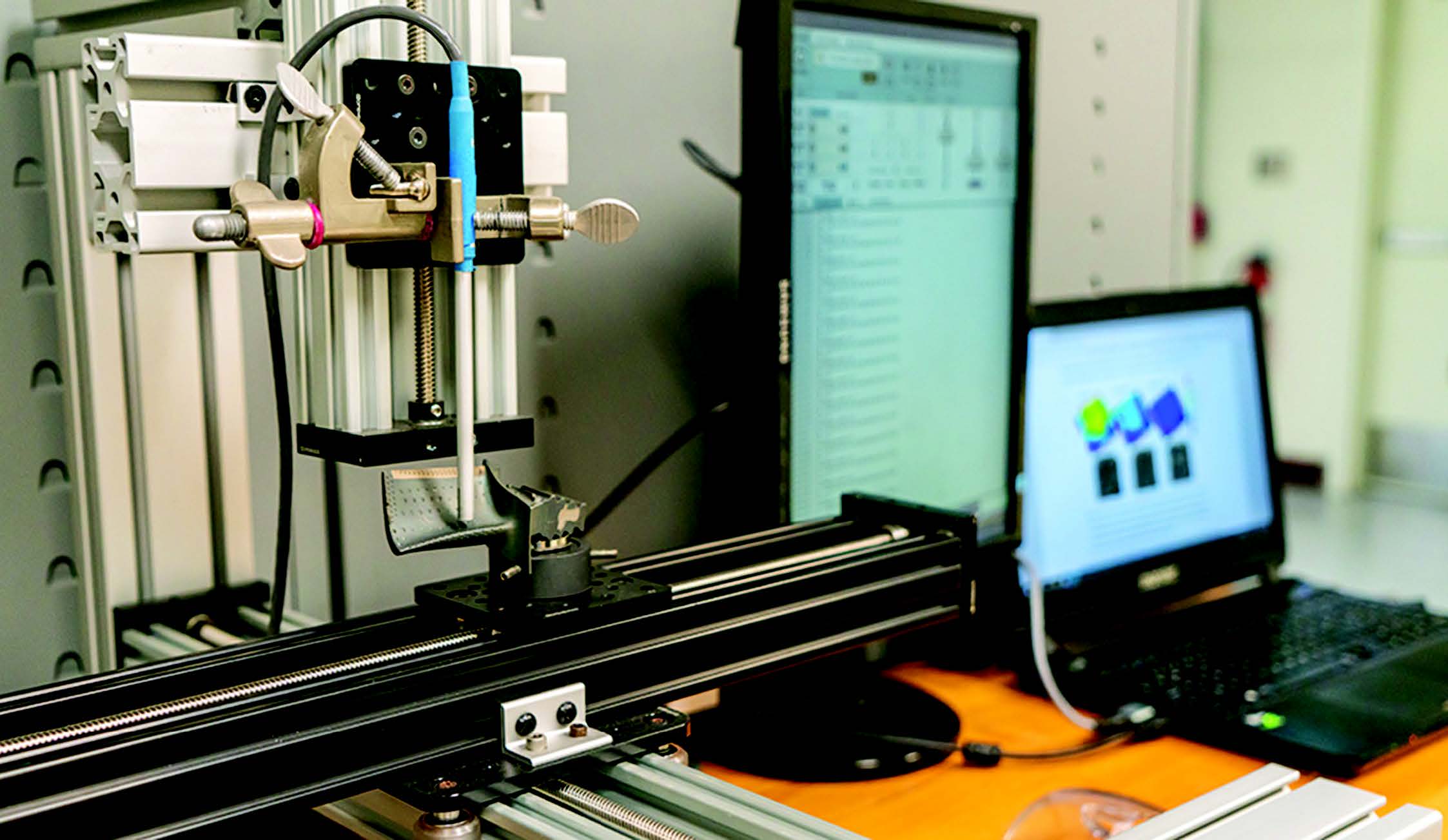Dr Daniel Salas demonstrates how the hidden magnetic tag can store a cache of information within an item. Image: Texas A&M Engineering
Texas A&M Researchers are applying metal additive manufacturing techniques to embed a hidden cache of information within products to help combat counterfeited goods.
By Steve Kuhlmann, Texas A&M University College of Engineering
Ensuring manufactured goods and components have not been copied and replaced illegally by counterfeited goods is a high-priority concern of the manufacturing and defence industries in the US and around the world.
A potential solution would hold wide-reaching impacts and implications in various areas ranging from enhancing biomedical implants to protecting national defense assets.
Hidden magnetic tags
Texas A&M University researchers have developed a method of imprinting a hidden magnetic tag, encoded with authentication information, within manufactured hardware during the part fabrication process. The revolutionary process holds the potential to expose counterfeit goods more easily by replacing physical tags — such as barcodes or quick response (QR) codes — with these hidden magnetic tags, which serve as permanent and unique identifiers.
The project, titled “Embedded Information in Additively Manufactured Metals via Composition Gradients for Anti-Counterfeiting and Supply Chain Traceability,” is a faculty partner project supported by the SecureAmerica Institute. It includes researchers from the Department of Materials Science and Engineering and the J. Mike Walker ’66 Department of Mechanical Engineering at Texas A&M.
The faculty investigators on the project include Ibrahim Karaman, Chevron Professor I and department head of the materials science and engineering department; Raymundo Arroyave, professor of materials science and engineering and Segers Family Dean’s Excellence Professor; and Richard Malak, associate professor of mechanical engineering and Gulf Oil/Thomas A. Dietz Career Development Professor. In addition to the faculty, Daniel Salas Mula, a researcher with the Texas A&M Engineering Experiment Station, and doctoral student Deniz Ebeperi — both members of Karaman’s research group — have worked on the project. The team has also collaborated with Jitesh Panchal, professor of mechanical engineering at Purdue University.
Security & authentication
Ensuring security and reliable authentication in manufacturing is a critical national concern, with the US investing billions of dollars in manufacturing. Without such a method readily available, it can be nearly impossible to differentiate an authentic part or component from its counterfeit copy.
“The issue is that when I come up with an idea, device or part, it is very easy for others to copy and even fabricate it much more cheaply — though maybe at a lower quality,” Karaman said. “Sometimes they even put the same brand name, so how do you make sure that item isn’t yours? (The embedded magnetic tag) gives us an opportunity and a new tool to make sure that we can protect our defence and manufacturing industries.”
The team is implementing metal additive manufacturing techniques to accomplish its goal of successfully embedding readable magnetic tags into metal parts without compromising on performance or longevity. Researchers used 3D printing to embed these magnetic tags below the surface into nonmagnetic steel hardware.
Other applications for this method include traceability, quality control and more, largely depending on the industry in which it is used.

Used in nonmagnetic steel
Once embedded into a nonmagnetic item, the magnetic tag is readable using a magnetic sensor device — such as a smartphone — by scanning near the correct location on the product, allowing the designated information to be accessed by the user.
While other methods exist for imprinting information, they primarily require sophisticated and costly equipment that introduces a barrier to real-world implementation.
“Different approaches have been used to try to locally change the properties of the metals during the manufacturing process to be able to codify information within the part,” said Salas Mula. “This is the first time that magnetic properties of the material are being used in this way to introduce information within a nonmagnetic part, specifically for the 3D printing of metals.”
Ebeperi said that to map the magnetic reading of the part, the team created a custom three-axis magnetic sensor capable of mapping the surface and revealing the regions where the embedded magnetic tag was accessible.
Ongoing research
While the system is more secure than a physical tag or code located on the exterior of an item, the team is still working to improve the complexity of the method’s security.
As the project continues, Karaman said the next steps include developing a more secure method of reading the information, possibly through the implementation of a physical “dual-authentication” requiring the user to apply a specific treatment or stimulus to unlock access to the magnetic tag.
About this Featured Story
This Featured Story appeared in Stainless Steel World January / February 2023 magazine. To read many more articles like these on an (almost) monthly basis, subscribe to our magazine (available in print and digital format – SUBSCRIPTIONS TO OUR DIGITAL VERSION ARE NOW FREE) .
Want to contribute as author? Please contact Joanne.
Every week we share a new Featured Story with our Stainless Steel community. Join us and let’s share your Featured Story on Stainless Steel World online and in print.


